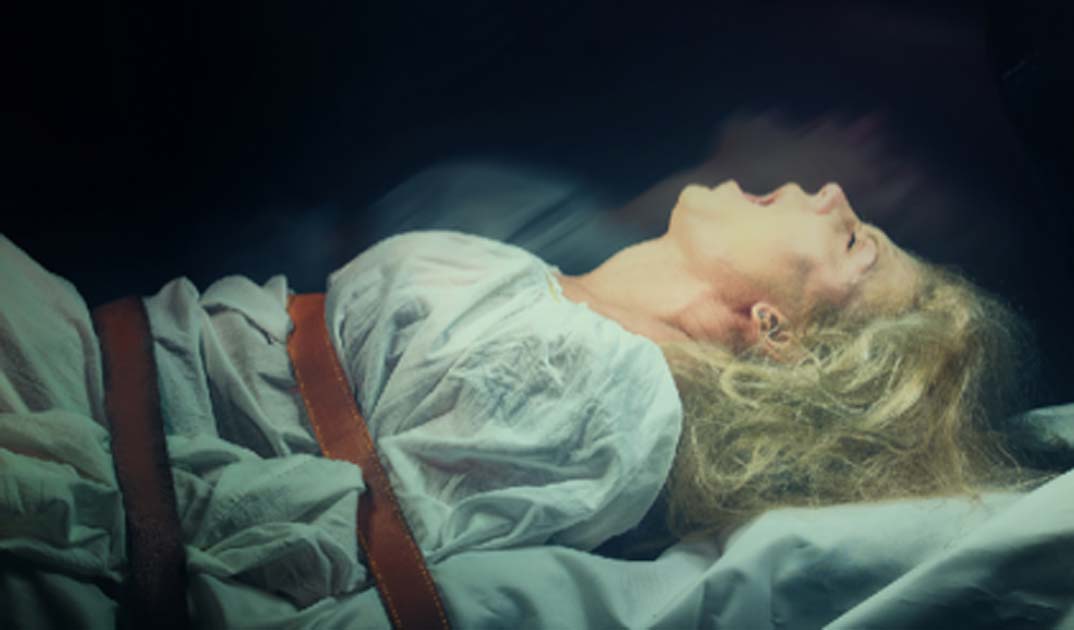Beware the Wandering Wombs of Hysterical Women
From ancient Greek physician Hippocrates to the infamous doctor Isaac Baker Brown of the 19th century, the pains and ailments of women were thought to be because of a ‘wandering womb’, better known as ‘hysteria’.
Hysteria, of the Greek translation 'hysterika,' which meant 'that which proceeds from the uterus’ was the generalized term given to women who suffered discomfort of every manner, ranging from mental illness to sexual deviancy, the lack of sexual desire, and even migraines.
Throughout history, medical practitioners have been in a constant struggle with their own codes of morality and treatment. This resulted in the creation of several techniques and machines, which inevitably resulted in the clinical and uncomfortable act of pelvic massage, and even masturbation. Still, the treatments never provided a cure and no matter what physicians did, the problems of a dissatisfied and uncomfortable woman remained.
In certain times in history, hysteria became known as the precursor to a complete demonic possession, resulting in priests having to perform exorcisms and root out potential witches in the area. The belief of hysteria as a symptom continued into European medicine and was extended to encompass several more symptoms with every passing century.
It was only in the early 20th century that hysteria became phased out due to its over-generalized use and diagnosis. Even though hysteria is no longer relevant in the modern era, a disorder of a ‘wandering womb’ still exists in the form of endometriosis.
Though the diagnosis and symptoms are not the same, endometriosis is when the lining and cells of a uterus begin to expand and grow in regions where it shouldn’t. Endometriosis, by modern clinical definition, is literally a wandering womb.
How could hysteria have lasted for so long? To answer this, one will need to study its history in detail.
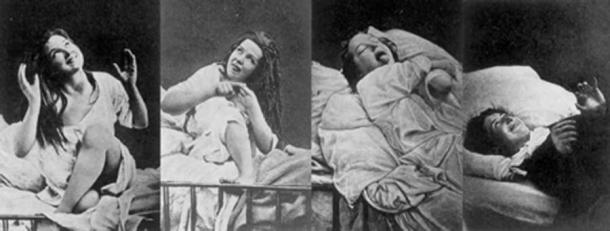
Women under hysteria as depicted in 1880. (Damiens.rf / Public Domain)
The Early History of Wandering Wombs
Its most notable appearances were in the writings of Hippocrates in his Hippocratic Corpus. In his earliest writings, hysteria was a disease of the womb, treatable with massage and exercise.
It was generally believed that the uterus could move within and throughout the body, depending on the health of the woman. According to Hippocratic physicians of the time, the womb itself was like an animal, and it moved to find cold and moist places within the body due to a lack of male seed irrigation.
The result of the womb’s vagabond nature was to create emotional and physical torment until the womb itself had found comfort. This resulted in women having fainting spells, menstrual pain, and a loss of verbal coherence. One treatment prescribed by Hippocratic physicians was to place sweet smells by the vaginal regions and foul salts by the nose in order to lure the uterus back to the woman’s lower groin.
However, by the 1st century AD, the philosophers Celsus and Saronus felt that the remedy for hysteria needed further additions to its treatment. Along with genital massage with sweet oil, exercise and relaxation were now added to the remedies of hysteria.
Diagnosing Hysteria
The definitions of hysteria remained similar in its multifaceted explanations for hundreds of years. Most symptoms included congestion of bodily fluids, nervousness, insomnia, sensations of heaviness in abdomen, muscle spasms, shortness of breath, loss of appetite for food or sex, being demanding, causing trouble, and deficiency of sexual gratification.
By the European Middle Ages, according to contemporary scholar Rachel Maines, the name of 'hysteria' was changed to the ‘suffocation of the uterus’. The diagnosis remained the same and so did the attitudes.
In later documents nearing the 11 th century AD, marriage and masturbation to orgasm became the untold cure for the symptom even though most medieval doctors were hesitant to prescribe this method in fear of being asked to perform it on their female patients. Most though would prefer for women to have their husbands or midwives perform the treatment.
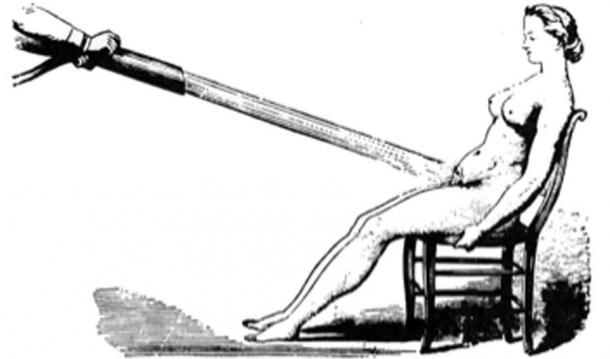
Water massages as a treatment for hysteria 1860. (Laurascudder / Public Domain)
During the 12 th century in Europe, most medical physicians relied on the Greek Classics from Plato and Hippocrates in order to diagnose most ailments. Additional diagnosis of hysteria would now include "the retaining of blood or of corrupt and venomous uterine humors that should be purged in the same way that men are purged of seed that comes from their testicles next to the penis”, as stated by the physician Trotula. However, in the years to come, the fear of the devil would become instrumental in the extreme treatments for hysteria when the previous methods did not work.
Hysteria and Possession
The 13th century Europe was no different in their definitions of hysteria, only now recommending that widows and nuns partake in the treatment of hysteria to balance the fluids and emotional stability of such individuals. The preferred treatments, however, was still married intercourse, as well as vaginal massaging techniques. However, if these methods did not work, the alternative and most extreme explanations would be of the supernatural torment of demons.
It was a widely held belief that if hysteria was not treatable by methods of the older ways, then the symptoms were the beginnings of a demonic possession caused by a hexing witch. The most desirable victims for the alleged demons were young women suffering from depression, single women, women who were viewed as difficult, and elderly women.
- 4,000-Year-Old Assyrian Tablet Makes First Known Infertility Diagnosis and Recommends Slave Surrogate
- Seven-Pound Calcified Uterus Unearthed in British Cemetery
- Archaeologists unearth 18th Century Sex Toy in Ancient Latrine in Poland
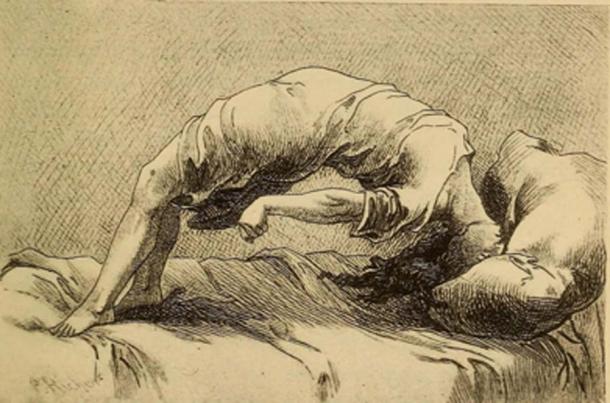
Demonic possession as a result of hysteria, 1858. (Fæ / Public Domain)
The notion of demon possession came from the misunderstanding of mental illnesses which existed during the time. Because of this, most physicians assumed that the traits for demon-possessed women, or demoniacs, were consistent: convulsions, increased intelligence accompanied by clairvoyance and spontaneous tremors, amnesia, and extreme emotional unbalance. Once this was diagnosed, the popular assumption was that there was another witch that had caused the possession of the suffering patient and would need to be found in order to reverse it.
By medieval canon law, any women suffering from either hysteria or demonic possessions were considered blameless of their actions. Thus, rather than stand trial, hysterical female criminals, or in the extreme cases, the 'possessed' were to be sent to priests in order to have exorcisms performed. Alas, if the exorcism did not work to calm the women, it would mean they were unsavable and the priests feared being taken by the demon possessions themselves.
It wasn’t until the late 17th century when the belief of these unusual ‘possessions’ was phased out, and the possibility of seeing these troubles as mental illnesses became more present in the medical world.
Hysteria and Mental Health
In the 17th century, hysteria emerged as one of the most common female diseases that could be treated by medical practitioners. However, what was changing was attitudes about mental health. During this time, the medical thoughts on hysteria were being studied as a psychological brain disorder, rather than a wandering womb.
The French physician, Philippe Pinel, one of the first physicians to develop more humane psychological study of patients, believed that the disease hysteria, and to some extent nymphomania, were mental instabilities caused by sexual frustrations. Though the diagnosis began to change, the cures remained the same. Pinel also believed in the form of vaginal massage in order to bring balance to the brain.
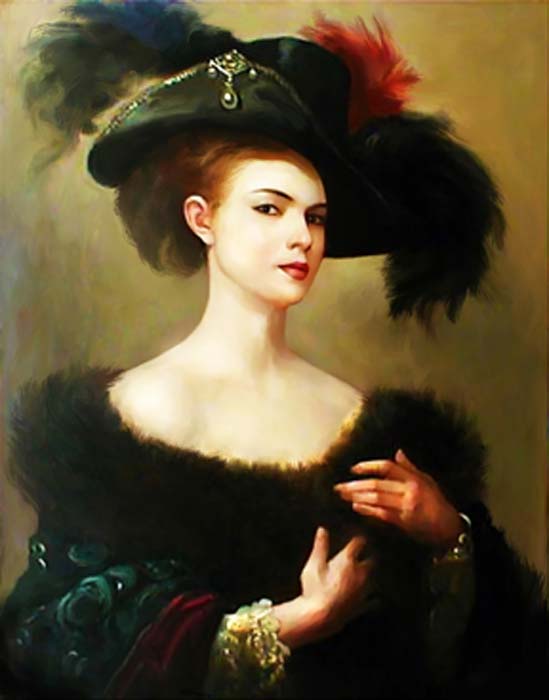
Hysteria was believed to be caused by nymphomania and other mental instabilities. (robertwaghorn / Public Domain)
During the 18th century, the symptoms of hysteria would be broadened to also include hypochondriac men. However, for the most part, it was still considered a woman’s disease since most practitioners felt that it was now, not only connected with a woman's mental state but also deeply connected to female sexual organs simultaneously.
Female Hysteria in the 19th Century
During the 19 th century, for women, the western world was plagued with a plethora of fears not only consisting of catching hysteria but also with the concerns of uncurable sexual diseases such as syphilis. With such fears that were prevalent in 19 th century society, so were the extreme treatment methods for such conditions. During the 19 th century, the desires for pleasure and the self would be seen as terrible.
Though in previous years, hysteria was considered uniquely feminine and directly connected to their sexual organs, the practitioners of the time now felt that hysteria was a more negative extreme state rendering “…women difficult, narcissistic, impressionable, suggestible, egocentric, and labile; not to mention idle, self-indulgent and deceitful, craving for sympathy, who had an unnatural desire for privacy and independence…” (Donkin, 1892)
Physicians carried a fear that they were promoting the notion of sexual debauchery by having their work compared to masturbation. Due to this, during the 19th century, there was an extreme treatment, though not very popular with most physicians of the time, to perform clitoridectomy (the circumcision of the clitoris) in order to prevent female masturbation, and therefore isolating the problems most women had with the alleged symptom of hysteria.
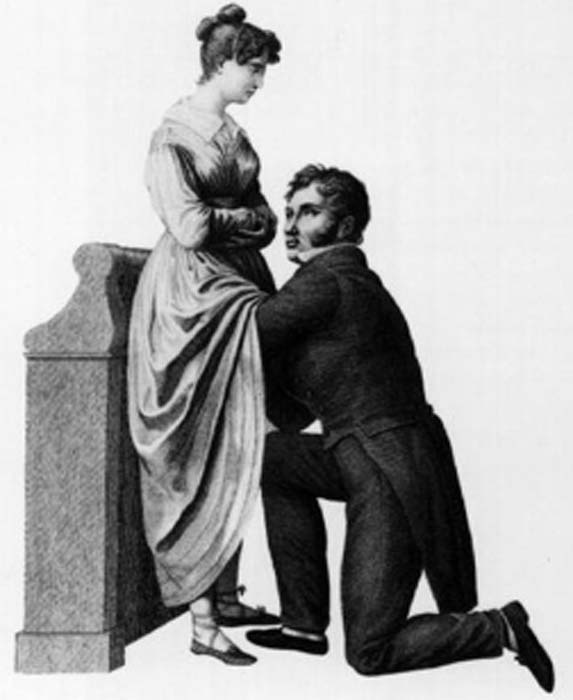
Gynecology or 1822, to treat hysteria doctors often performed the procedure of a clitoridectomy. (Morgoth666 / Public Domain)
Such 19 th century gynecologists such as Isaac Baker Brown (1812-1873), who was also president of the Medical Society of London, believed that the clitoris was utterly responsible for hysteria, epilepsy, and manic depression. In his opinion, if one were to surgically remove what he considered the ‘unnatural irritation’ called the clitoris, the issues which all women faced would be gone.
During this time, there was a widespread belief which most doctors of the time had that the mental and emotional disorders were directly connected to the female reproductive organs, and by simply removing them, it would make a woman compliant and trustworthy. However, by 1867, this fell out of practice.
In the second half of the 19th century, however, newer and more technical methods for treating hysteria would separate the sexual aspect of the disease and keep the physicians free from the lewd act of vaginal massage. This would come in the form of medical vibrators, and as scholar Rachel Maines would explore in her studies, there was a market that could be indefinitely exploited.
As a scholar, Rachel Maines theorized that medical practitioners from the early 19th century until the early 20th century practiced the techniques of medical masturbation upon female patients until they reached a sexual climax, in the most clinical and most non-romantic way.
- Bodies Left Behind - A Cruel History of Persecution, Shamanic Ecstasies & the True Witches Sabbath
- The Urine Wheel and Uroscopy: What Your Wee Could Tell a Medieval Doctor
- Ancient Egyptian Mummy Head Shows Woman Had Skin Condition Due to Beauty Practice

A 1918 ad with several models of mechanical vibrators, developed to treat hysteria. (PawelMM / Public Domain)
More often than not, most husbands and family members of the patient would be in the same room as a medical doctor would vaginally massage her to orgasm. This has been documented to take hours at a time and be very uncomfortable to watch.
As mentioned prior, due to the sexually perverse nature of the act, medical doctors desperately tried to recommend the technique to the patient’s husband or midwife to perform, rather than directly performing the treatment themselves. With the problems of symptoms continually returning to patients, another technique was promoted by way of mechanical automation.
Main's notion was that this tool was not only a better alternative to medical practitioners performing vaginal massage but also was a very marketable tool in terms of medical revenue: “Hysterical women represented a large and lucrative market for physicians. These patients never recovered nor died of their condition but continued to require treatment.” (Rachel Maines, 1999)
Though, even with Maine’s hypothesis, many other scholars believe this to be a skewed interpretation of the facts. Other scholars have chosen to keep the history of the vibrator and the history of hysteria as two separate and competing theories which exist in academia today.
Hysteria Redefined for the Modern Age
By the early 20th century, the number of women suffering from hysteria drastically declined due to its overgeneralized diagnosis. In the 21st century, hysteria was no longer recognized as an illness at all.
Within several hundred years, the definitions of wandering womb and hysteria seemed to stay somewhat consistent. Through time, more symptoms were added to the disease to explain further mental disorders which could not be accounted for.
However, the theme and treatment seemed to remain the same until the turn of the century. Only then was the disease hysteria phased out for further scientific and more specific definitions for ailments. Although it can be argued that advances in medical technology and thinking were the reasons for the social maturing, it may be potentially due to women attaining more rights than they had before.
Top image: Hysteria was a term used to diagnosis wandering womb a female medical condition branded by ancient Greeks. Source: rodjulian / Adobe Stock
By B.B. Wagner
References
Griffith. 2014. The Mysterious Case of the Wandering Womb. The University of Melbourne. [Online] Available at: https://blogs.unimelb.edu.au/sciencecommunication/2014/10/17/the-mysterious-case-of-the-wandering-womb/
Maek, H. 2009. Of Wandering Wombs and Wrongs of Women: Evolving Conceptions of Hysteria in the Age of Reason. University of Regina. [Online] Available at: https://ejournals.library.ualberta.ca/index.php/ESC/article/download/20152/15580
Maines, R. 1999. The Technology of Orgasm: “Hysteria,” the Vibrator, and Women’s Sexual Satisfaction. The Johns Hopkins University Press.
Mayo Clinic Staff. Date Unknown. Endometriosis. Mayo Clinic. [Online] Available at: https://www.mayoclinic.org/diseases-conditions/endometriosis/symptoms-causes/syc-20354656
Rudnick, L. and Heru, A. 2017. The ‘secret’ source of ‘female hysteria’: the role that syphilis played in the construction of female sexuality and psychoanalysis in the late nineteenth and early twentieth centuries. Sage journals. [Online] Available at: https://journals.sagepub.com/doi/full/10.1177/0957154X17691472
Spanos, N. and Gottlieb, J. 1979. Demonic possession, mesmerism, and hysteria: A social psychological perspective on their historical interrelations. Journal of Abnormal Psychology. [Online] Available at: https://psycnet.apa.org/doiLanding?doi=10.1037%2F0021-843X.88.5.527
Tasca, C., Rapetti, M., Carta, M., and Fadda, B. 2012. Women And Hysteria In The History of Mental Health. Clinical Practice and Epidemiology in Mental Health. [Online] Available at: https://www.researchgate.net/publication/232746123_Women_And_Hysteria_In_The_History_Of_Mental_Health
Ussher, J. 2013. Diagnosing difficult women and pathologizing femininity: Gender bias in psychiatric nosology. University of Western Sydney, Australia. Feminism and Psychology. [Online] Available at: https://journals.sagepub.com/doi/abs/10.1177/0959353512467968
















